After hosting a permablitz on our land (a volunteer workday focusing on permaculture projects) the weekend of January 14th 2017, over 200 trees, shrubs, asparagus and alliums were planted and watered in by a nice steady rain over the weekend and early week that culminated in a nice long thunderstorm Wednesday morning. As the soils became saturated a major runoff event began. Roads, houses, hill tops and fields fed into all of the creeks, streams and rivers. I love watching the water move across the landscape and thinking about it’s journey. I can’t help but analyze how cloudy the water is, checking to see if it’s carrying away valuable top soil. I’ve become obsessed with erosion since beginning my studies in permaculture. To think that the soil that we and our whole ecosystem depends on can be carried out from under our feet by the very rain we need is definitely a problem worth solving. So the question becomes, what can I do about it? How can we help something so large as an ecosystem and prevent something that seems so inexorable as erosion? We’ve got a whole tool box of techniques that we’ve put into practice on our farm and today we’re going to highlight three erosion control methods and how they work.
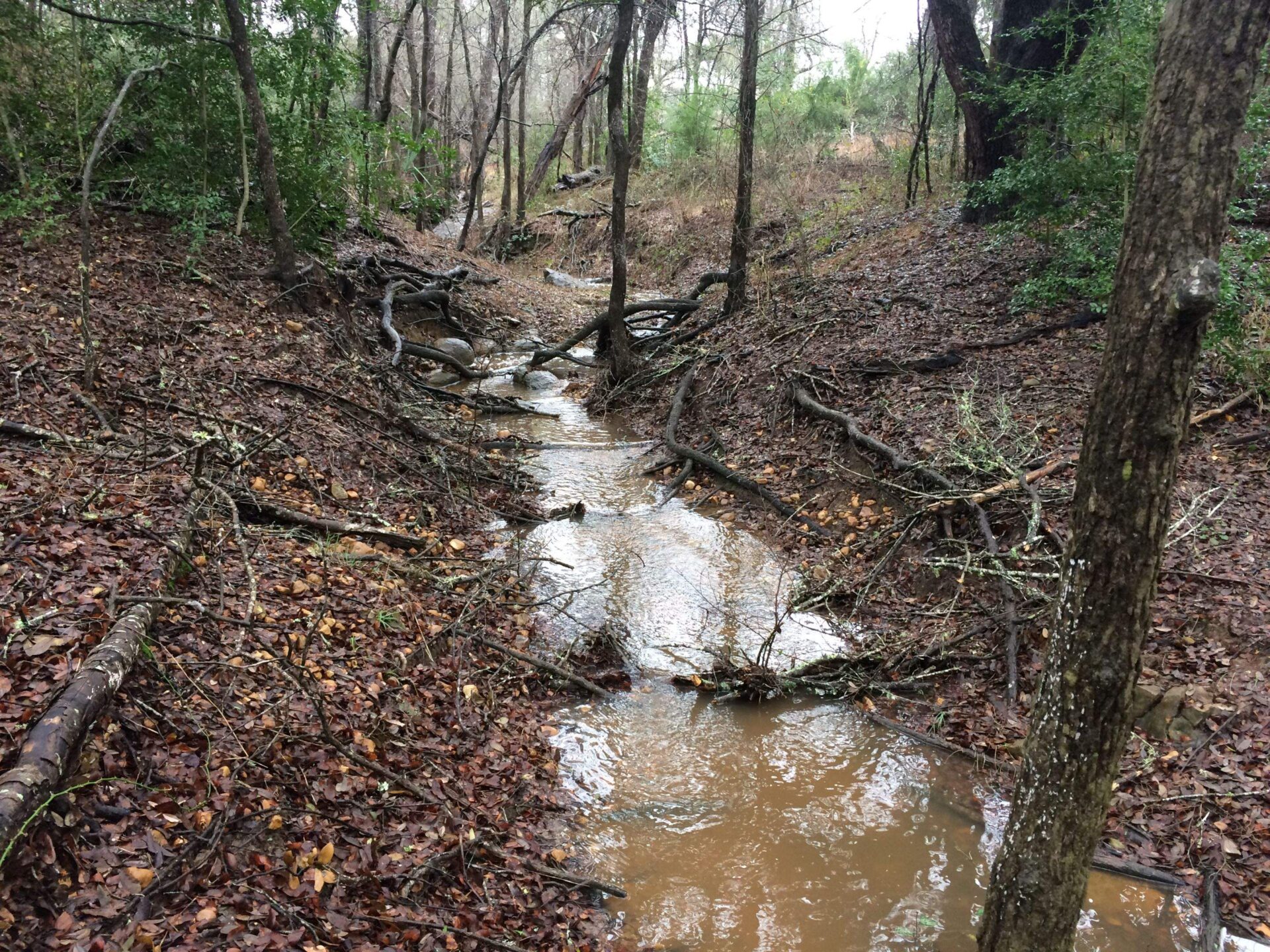
On our Central Texas homestead, the soil is easily eroded by these runoff events. Our ponds turn a cloudy brownish yellow and small erosion channels get big very fast; however, that’s actually one of the reasons we selected this land. The topography that has been created by the water carving away soil layer by layer is quite beautiful and provides ample opportunity for improvement. Plus it turns out that helping to slow erosion can be pretty fun if you like being in the woods, moving things around, and building natural structures the way children do but this time with a greater purpose in mind. We take on the challenge of slowing erosion and building topsoil not just because intellectually we know it’s a good thing to do but also because it feels right when you’re doing it. This is the first of many blogs to chronicle and share our practices, results and overall journey working to understand and steward this erosion prone land.
Here’s how I check how much rain we received, half a wheel barrow, great!
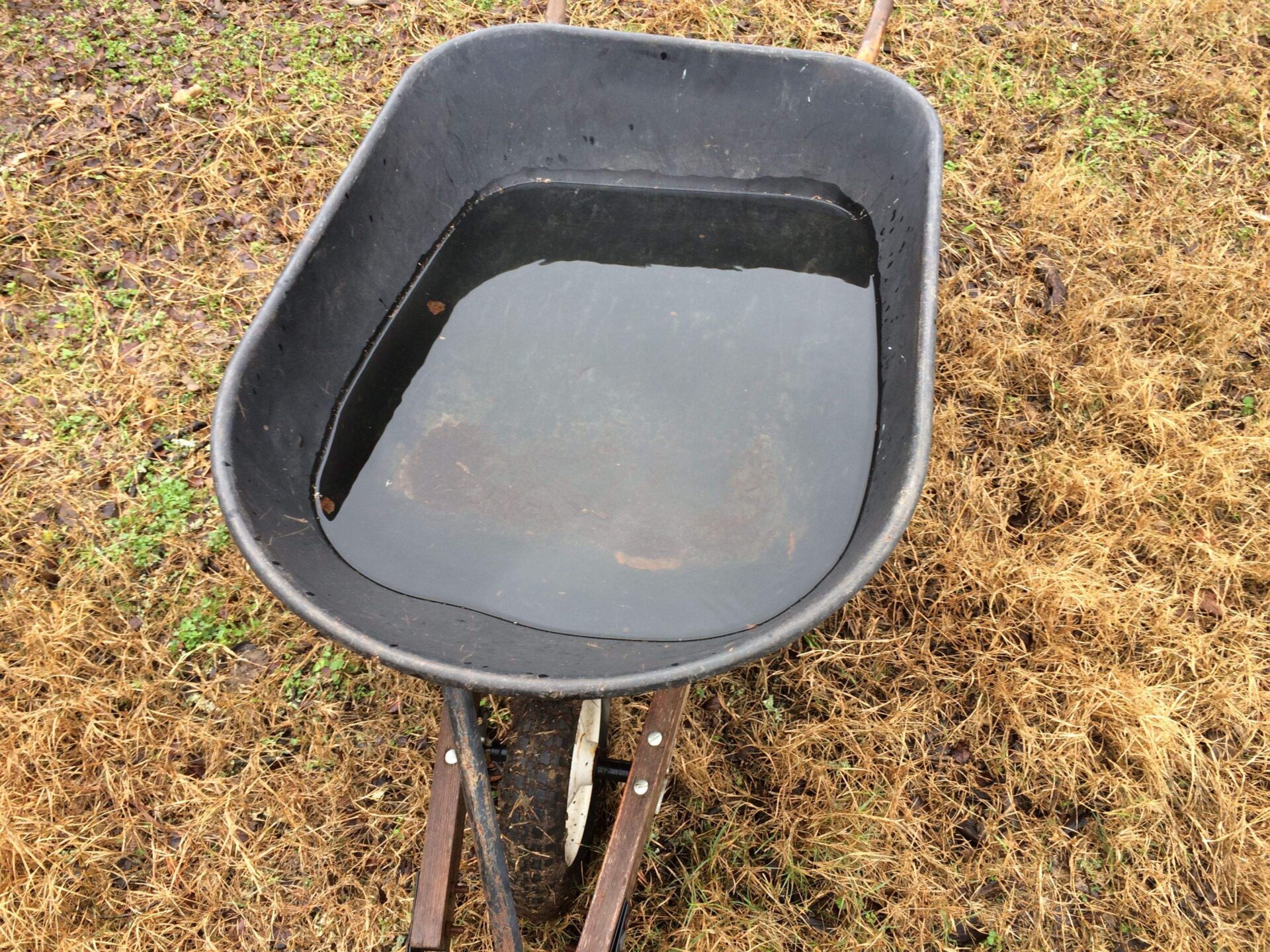
Looks like we got a little under 3 inches of rain over the course of 4 days. Considering that we’ve seen 10 inches of rain in a few hours just last year, we need to be ready for torrential runoff events.
1) Brush Berms
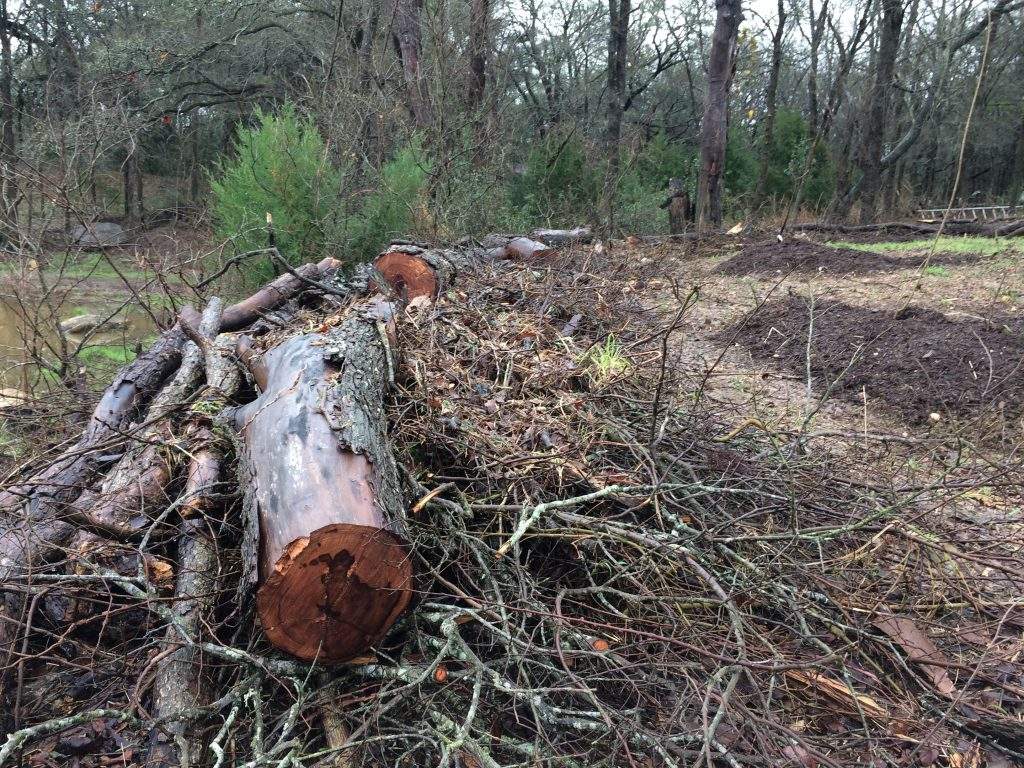
If you’ve ever taken on forestry management, selective clearing, tree trimming etc. you know the brush can pile up fast. While there are a number of things you can do with it, having tried them all, building brush berms is my favorite. The brush berm pictured above is a work of art. Jakob Lindsey had the inspiration and lead the team that handled every stick and wove them together packing what seemed like 10 times the volume of brush pile into this brush berm. As water flows downhill carrying debris and soil sediment it hits this structure slowing down and dropping most of the material it’s carrying with it. Overtime the elements being dropped build up into a mound of organic matter that impounds water behind it and gives it a chance to soak in. The brush berm is superb wildlife habitat, which contributes to meeting our qualifications for wildlife tax exemption, and will improve the soil beneath it like repeated mulch applications, benefiting plantings in the area.
2) Rock Gabions
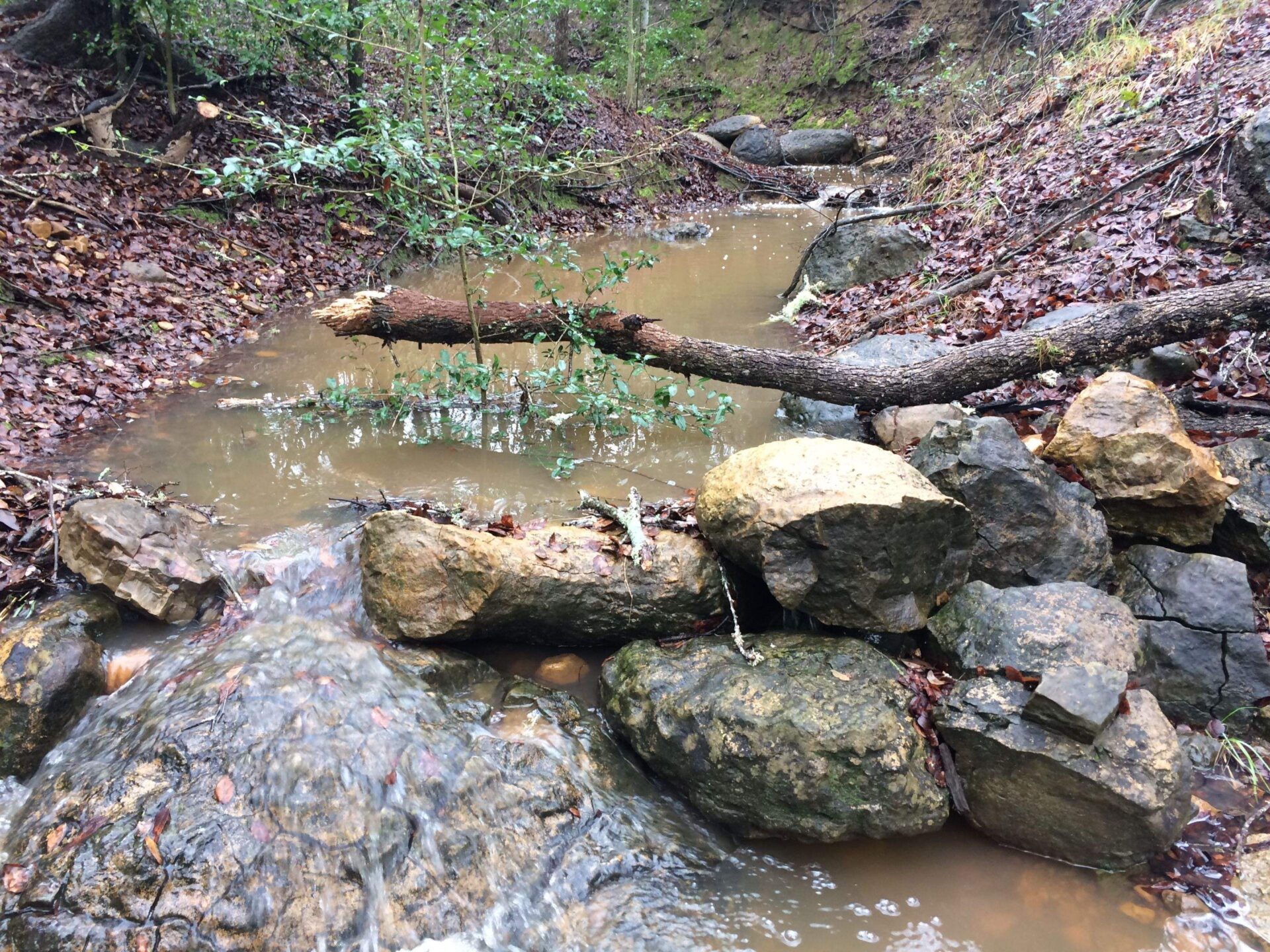
Rock Gabions are much like Brush Berms in the principal of how they work. The water hits them, slows down and drops sediment contributing to the structure overtime. I love how with these techniques, we can put in a little bit of time, using natural on-site materials and create something that will then build itself up through the action of serving it’s purpose. Imagine if a house built it’s self up over time for you instead of needing repairs! Rocks are a better material for slowing water down in creek beds because they’re less prone to floating down stream in a big runoff event. Luckily for us there’s usually plenty of rocks on hand in creek beds. Your gabions may require some minor repair after intense rains as the force of the water can knock them over if they’re not built with really big rocks, but it only takes a few minutes.
3) Boomerang Berms
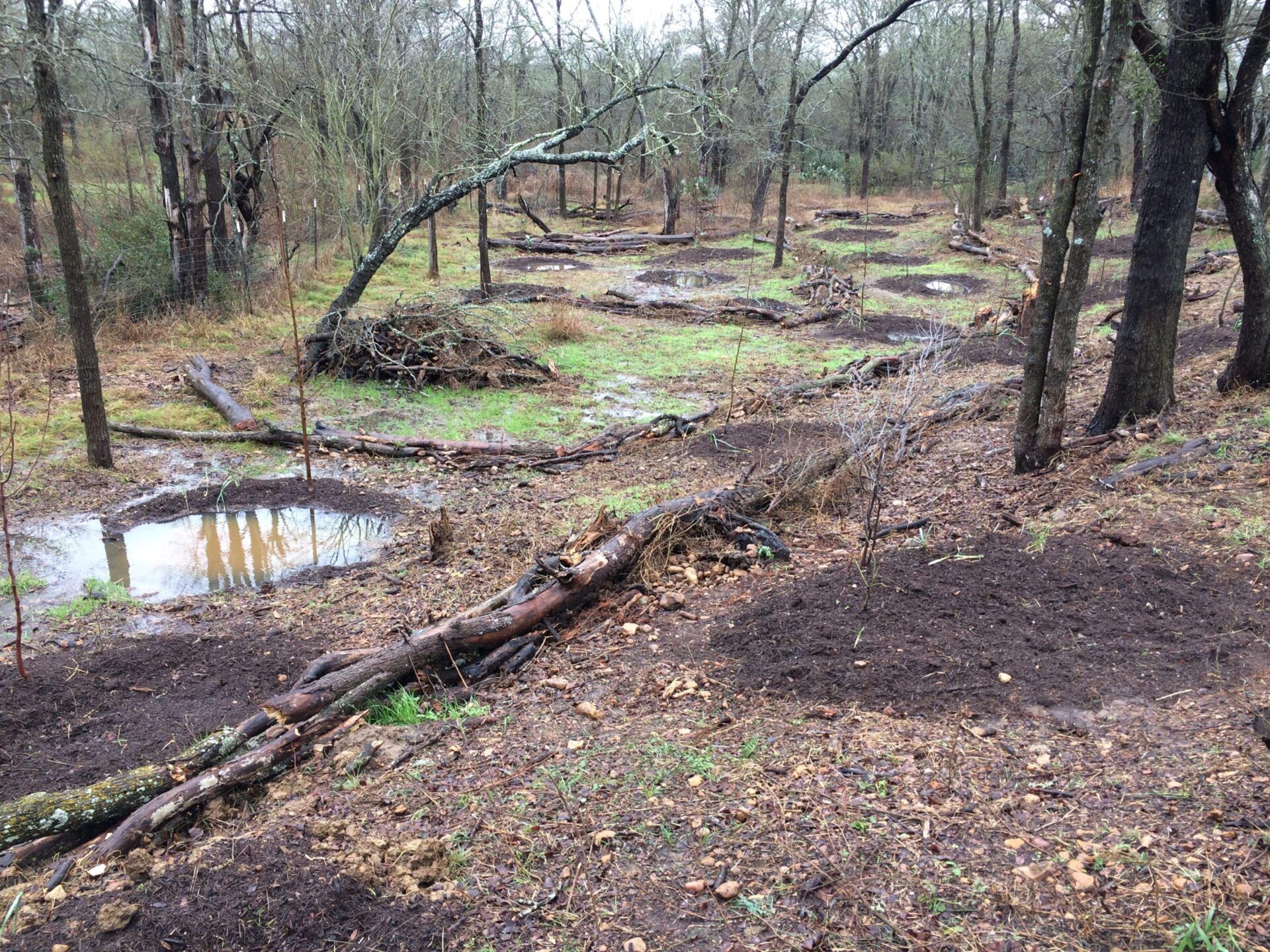
Notice how cloudy the water is in these little depressions and how it’s a good bit clearer on the outflow:
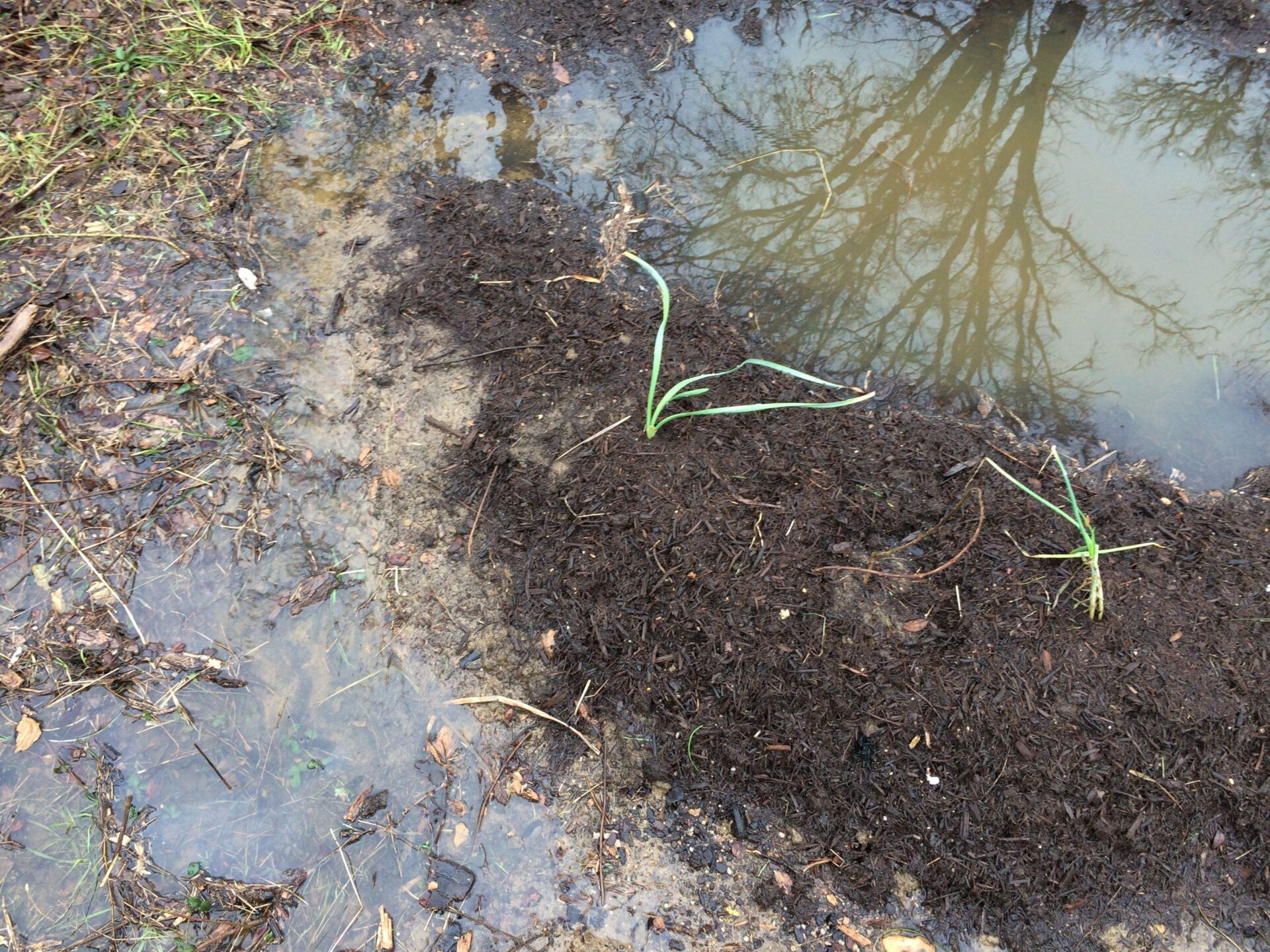
I’m really happy with how these are working out. The context of this hillside didn’t suit berms and swales, which is a technique we use a lot for various reasons. In comparison the boomerang berms are not catching as much water but they were much less work to install and have less of a blow out risk in places with significant water flow. The water we are slowing down is directed right at the base of the plants we’re trying to establish and the boomerangs won’t create the issues that berms and swales can around access and maintenance. They’re still doing a great job of filtering sediment out of the water and keeping our topsoil on site. We were able to weave these in really easily among existing trees without disturbing root systems. We’ll be using this boomerang technique more in the future, reducing the cost for large scale plantings while still getting most of the benefits of machine dug earthworks.
